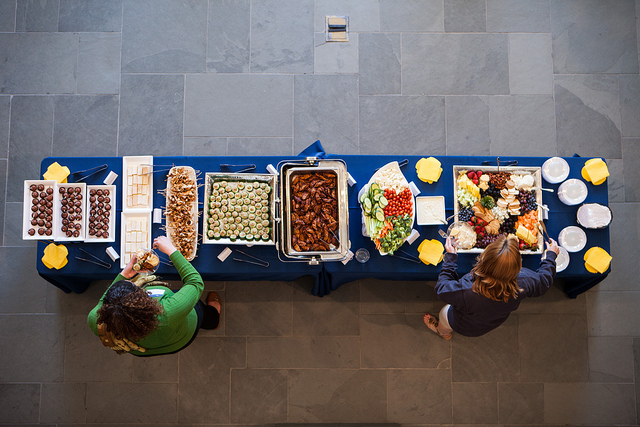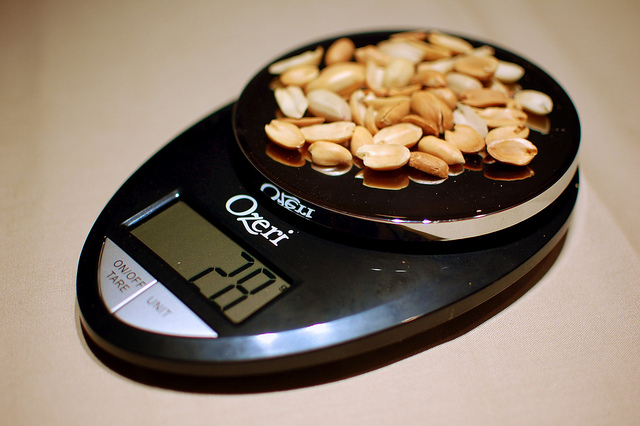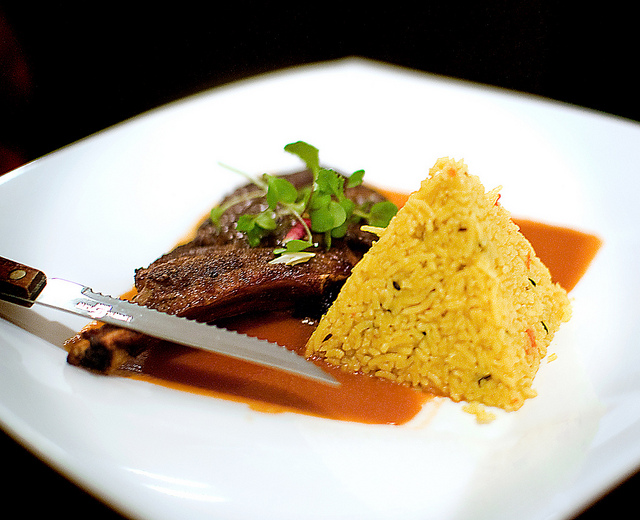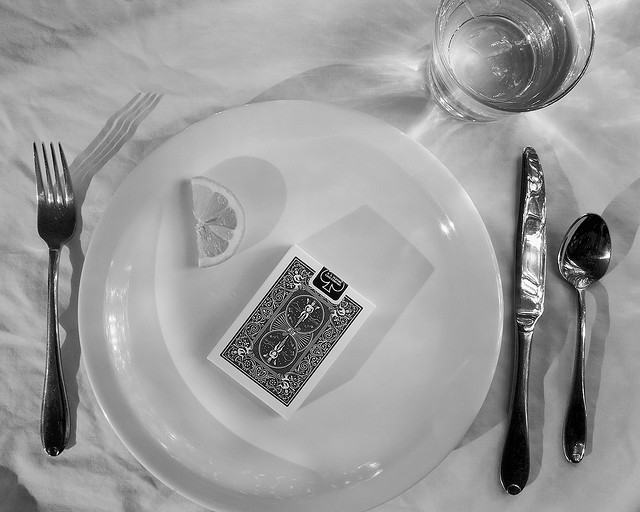Identifying the Three-Ounce Filet: Practicing Portion Control at Office Meals
Anyone who has tried to read up on healthy eating and weight loss is probably very familiar with the term “portion control”. But what, exactly, does portion control mean? And how can we put portion control to practice in our daily lives — especially in the office, when takeout lunches and catering tables are in ample supply?
The truth is, we all encounter two portions or serving sizes in our daily lives: the portions we’re actually served (or serve ourselves) and the portions that are recommended by the U.S. Department of Agriculture.

Image source: flickr user Univeristy of Michigan’s Ford School
Wait — let’s clarify. You may not actually encounter the USDA-recommended serving sizes, unless you make a point to practice vigilant portion control on your own. Most packaged foods and restaurant dishes are quite larger than the recommended portions, but with a little research — and some visual aids — you can learn to estimate pretty accurate portion sizes, even during office lunches. And as nutrition experts suggest, this skill may be key to achieving weight loss and diet goals.
With that in mind, let’s examine both the recommended daily intake (now measured in cups & ounces instead of more ambiguous “servings”) from the USDA, as well as what reasonable portions from each food group might look like:
Protein (5 – 6.5 ounces per day recommended)
Meat: a 3-ounce serving is about the size of a deck of cards
Fish fillet: a 3-ounce serving is about size of a checkbook
Lentil/bean soup: a 2-ounce serving is one cup of soup
Eggs: one egg is a 1-ounce serving (this one’s easy!)
Peanut butter: a 2-ounce serving is 2 tablespoons, about the size of a ping pong ball

Image source: bradleypjohnson
Grains (5-8 ounces per day recommended, at least half from whole grains)
Pasta & rice: one 2-ounce serving is one cup of cooked pasta or rice, about the size of a tennis ball
Bagels: one large bagel is usually a 4-ounce serving (yikes!)
Oatmeal: one packet of instant oatmeal (or 1/2 cup cooked) is a 1-ounce serving
Bread: two slices of bread make a 2-ounce serving
Fruits (1.5 – 2 cups per day recommended)
Apples: 1 small apple is one cup
Bananas: 1 large banana is one cup
Oranges: 1 large orange is one cup
Strawberries: 8 large strawberries equals one cup
Grapes: 32 grapes equals one cup

Image source: flickr user pamlau.com
Veggies (2-3 cups per day recommended)
Sweet potatoes: 1 large sweet potato is one cup
Carrots: 12 baby carrots equals one cup
Bell peppers: 1 large bell pepper is one cup
Corn: 1 large ear of corn is one cup
Greens/spinach: 2 cups raw or 1 cup cooked is a one cup serving; 1 cup is about the size of a baseball
Oils/fats (5-7 teaspoons per day recommended)
Mayonnaise: 2 teaspoons is about the size of two dice
Butter: 1 teaspoon is the size of a postage stamp
Dairy (3 cups per day recommended, but choose low-fat varieties)
Note: Recommended allowance is 3 cups per day, but choose low-fat varieties
Yogurt: one 8-ounce container is one cup of dairy serving
Cheese: 1.5-ounce serving of cheese is one cup of dairy serving; about the size of eight or nine dice
Cottage cheese: 2 cups of cottage cheese equals one cup of dairy serving

Image source: flickr user **RCB**
Bottom Line:
What do proper portion sizes look like when it comes to office meals?
At a breakfast meeting: half a bagel with half a Ping-pong ball-sized serving of peanut butter; an 8-ounce container of yogurt; a whole banana
From the Chinese takeout spread: a deck-of-cards-sized serving of pork or beef; a tennis ball-sized pile of rice; a baseball-sized pile of garlicky spinach or broccoli
From the conference catering table: a checkbook-sized piece of salmon or a cup of lentil soup; a tennis ball-sized scoop of whole wheat pasta; a baked sweet potato; a dish of 8 large strawberries for dessert
This may be tricky at first, especially if you’re used to consuming the entire portion plopped on your plate or stuffed into a takeout box. The first step, though, is simply knowing what a good portion size looks like… then you can practice only going back for seconds of the veggies and fruits, instead of the bagels and pasta!
Catering and takeout at the office doesn’t have to be a challenge for health-conscious employees. Waiter.com makes it simple and straightforward to order a wide variety of nutritious foods so that every food group can be represented in the lunch room!